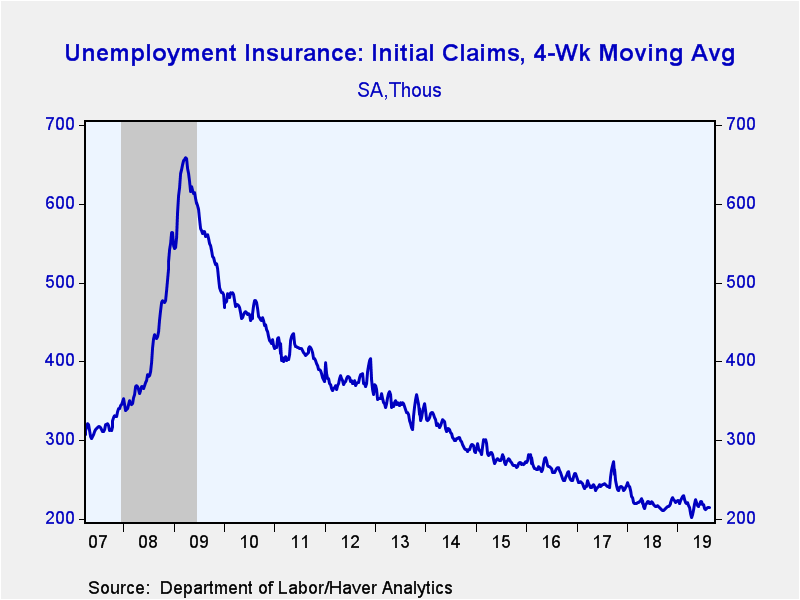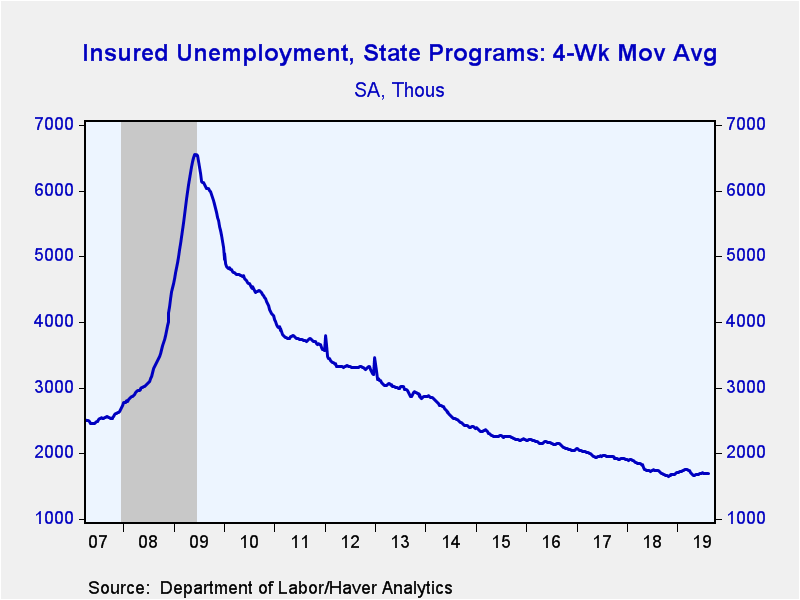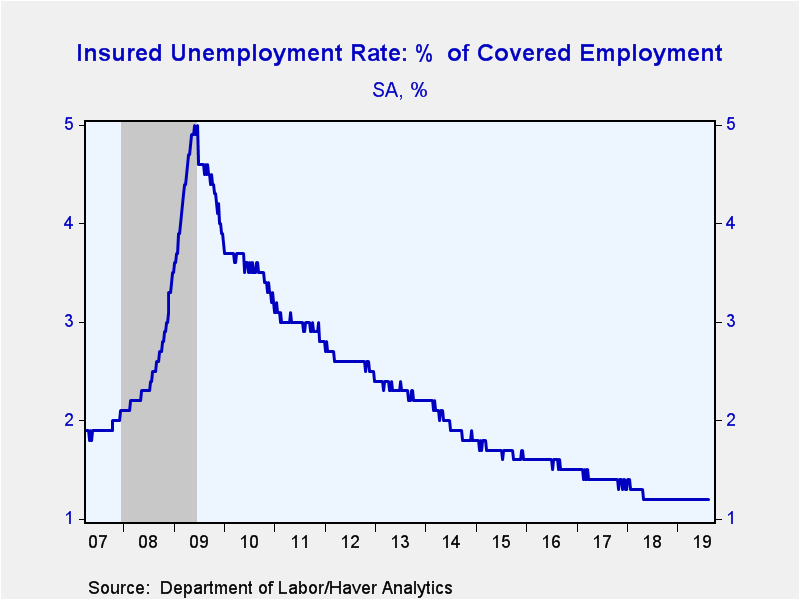 Global| Aug 29 2019
Global| Aug 29 2019U.S. Initial Claims for Unemployment Insurance Zigzag Higher
Summary
Initial claims for unemployment insurance increased 4,000 to 215,000 (unchanged year-on-year) during the week ending August 24 from a slightly upwardly-revised 211,000 in the prior week. Two weeks ago, claims rose to 221,000. The [...]
Initial claims for unemployment insurance increased 4,000 to 215,000 (unchanged year-on-year) during the week ending August 24 from a slightly upwardly-revised 211,000 in the prior week. Two weeks ago, claims rose to 221,000. The Action Economics Forecast Survey expected 213,000. The four-week moving average of initial claims, which smooths out week-to-week volatility, edged down to 214,500 from 215,000.
Continuing claims for unemployment insurance increased 22,000 to 1.698 million (-1.1% y/y) in the week ending August 17, from a slightly upwardly-revised 1.676 million in the prior week. The four-week moving average of claimants edged down to 1.697 million from 1.698 million.
The insured rate of unemployment remained at the record low 1.2%, where it has been since May 2018. Data on the insured unemployment rate go back to 1971.
Insured rates of unemployment vary widely by state. During the week ending August 10, the lowest rates were in South Dakota (0.26%), Nebraska (0.40%), Indiana (0.44%), Utah (0.44%), and North Carolina (0.47%). The highest rates were in California (1.72%), Rhode Island (1.77%), Pennsylvania (1.94%), Connecticut (2.18%), and New Jersey (2.38%). Among the other largest states by population not mentioned above, the rate was 1.02% in Texas, 0.49% in Florida, and 1.41% in New York. These state data are not seasonally adjusted.
Data on weekly unemployment claims going back to 1967 are contained in Haver's WEEKLY database, and they are summarized monthly in USECON. Data for individual states are in REGIONW. The expectations figure is from the Action Economics Forecast Survey, carried in the AS1REPNA database.
| Unemployment Insurance (SA, 000s) | 08/24/19 | 08/17/19 | 08/10/19 | Y/Y % | 2018 | 2017 | 2016 |
|---|---|---|---|---|---|---|---|
| Initial Claims | 215 | 211 | 221 | 0.0 | 220 | 244 | 262 |
| Continuing Claims | -- | 1,698 | 1,676 | -1.1 | 1,756 | 1,961 | 2,135 |
| Insured Unemployment Rate (%) | -- | 1.2 | 1.2 |
1.2 |
1.2 | 1.4 | 1.6 |
Gerald D. Cohen
AuthorMore in Author Profile »Gerald Cohen provides strategic vision and leadership of the translational economic research and policy initiatives at the Kenan Institute of Private Enterprise.
He has worked in both the public and private sectors focusing on the intersection between financial markets and economic fundamentals. He was a Senior Economist at Haver Analytics from January 2019 to February 2021. During the Obama Administration Gerald was Deputy Assistant Secretary for Macroeconomic Analysis at the U.S. Department of Treasury where he helped formulate and evaluate the impact of policy proposals on the U.S. economy. Prior to Treasury, he co-managed a global macro fund at Ziff Brothers Investments.
Gerald holds a bachelor’s of science from the Massachusetts Institute of Technology and a Ph.D. in Economics from Harvard University and is a contributing author to 30-Second Money as well as a co-author of Political Cycles and the Macroeconomy.









